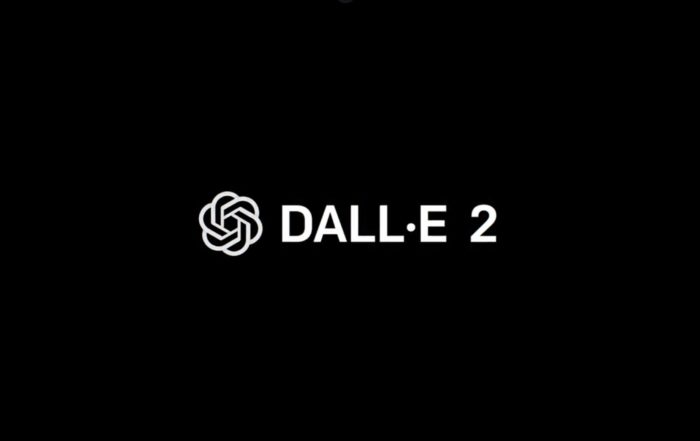What is GitHub and why should you care?
Most people who spend any amount of time working with websites use GitHub at some point. However, even though it’s one of the most popular sites on the internet, many people don’t know what it is or why they should care about it. Here’s your answer. From knowing how to use Git to setting up Github Pages, this article will teach you everything you need to know about GitHub so that you can join the rest of the internet in using it with confidence.
Introducing GitHub
 It’s hard to overstate how big a deal Github has become. It’s a platform for developers to store, share, modify, fork and merge their code online. These days it seems as if every budding developer knows how to use Github, but there are still those who don’t know what exactly it is or how they can leverage it to improve their work. Whether you’re already comfortable with Git or not, there are several reasons why every programmer should be familiar with GitHub—the most popular Git hosting service in existence. We thought we would take some time to explore its importance in today’s software development world. GitHub isn’t just another code host: Most coders will tell you that they’ve got all of their projects stored on sites like BitBucket and Google Code Hosting. There may be a good reason for keeping your stuff on such services; however, Git —the underlying technology that drives GitHub —is one of the most important tools in a modern programmer’s arsenal.
It’s hard to overstate how big a deal Github has become. It’s a platform for developers to store, share, modify, fork and merge their code online. These days it seems as if every budding developer knows how to use Github, but there are still those who don’t know what exactly it is or how they can leverage it to improve their work. Whether you’re already comfortable with Git or not, there are several reasons why every programmer should be familiar with GitHub—the most popular Git hosting service in existence. We thought we would take some time to explore its importance in today’s software development world. GitHub isn’t just another code host: Most coders will tell you that they’ve got all of their projects stored on sites like BitBucket and Google Code Hosting. There may be a good reason for keeping your stuff on such services; however, Git —the underlying technology that drives GitHub —is one of the most important tools in a modern programmer’s arsenal.
Why We Use GitHub
Before you begin to use Github, it’s important to know that there are two basic ways of interacting with it: through their web interface or through their desktop application. At first glance, both appear very similar; however, there are key differences between using these two methods. While using their website is great for quickly jumping in and getting started (and also for sharing projects without installing anything), if you plan on doing more serious development work it may make sense to download their software. One major benefit of using the desktop app is that it will automatically save your progress as you work – so even if your computer crashes or loses power, all will not be lost. This comes in handy when making larger and more involved changes – since these kinds of changes might result in lost time and effort otherwise. Another advantage to having a local copy of your repository is speed; when working remotely, every interaction you have with Github must go through their servers before reaching your machine. These extra steps add up over time and will slow down your workflow significantly. In addition to providing a faster experience, locally stored repositories also offer another perk: they let you store things offline. If internet access is spotty or unavailable where you live/work/play/etc., just fire up your local repo and carry on coding. If something isn’t available online then it doesn’t exist…right? 😉 Also note that while using your own laptop for version control does come with some benefits, keep in mind that uploading large amounts of data could count against your internet service provider’s monthly data cap—which means paying fees for going over your allotted bandwidth. If you find yourself regularly storing gigs upon gigs of code via GitHub, talk to your ISP about upgrading to an unlimited plan (or other plans tailored to high-bandwidth activity).
First Steps to get started with Github
 Before you begin to use Github, it’s important to know that there are two basic ways of interacting with it: through their web interface or through their desktop application. At first glance, both appear very similar; however, there are key differences between using these two methods. While using their website is great for quickly jumping in and getting started (and also for sharing projects without installing anything), if you plan on doing more serious development work it may make sense to download their software. One major benefit of using the desktop app is that it will automatically save your progress as you work – so even if your computer crashes or loses power, all will not be lost. This comes in handy when making larger and more involved changes – since these kinds of changes might result in lost time and effort otherwise. Another advantage to having a local copy of your repository is speed; when working remotely, every interaction you have with Github must go through their servers before reaching your machine. These extra steps add up over time and will slow down your workflow significantly. In addition to providing a faster experience, locally stored repositories also offer another perk: they let you store things offline. If internet access is spotty or unavailable where you live/work/play/etc., just fire up your local repo and carry-on coding. If something isn’t available online then it doesn’t exist…right? 😉 Also note that while using your own laptop for version control does come with some benefits, keep in mind that uploading large amounts of data could count against your internet service provider’s monthly data cap—which means paying fees for going over your allotted bandwidth. If you find yourself regularly storing gigs upon gigs of code via GitHub, talk to your ISP about upgrading to an unlimited plan (or other plans tailored to high-bandwidth activity).
Before you begin to use Github, it’s important to know that there are two basic ways of interacting with it: through their web interface or through their desktop application. At first glance, both appear very similar; however, there are key differences between using these two methods. While using their website is great for quickly jumping in and getting started (and also for sharing projects without installing anything), if you plan on doing more serious development work it may make sense to download their software. One major benefit of using the desktop app is that it will automatically save your progress as you work – so even if your computer crashes or loses power, all will not be lost. This comes in handy when making larger and more involved changes – since these kinds of changes might result in lost time and effort otherwise. Another advantage to having a local copy of your repository is speed; when working remotely, every interaction you have with Github must go through their servers before reaching your machine. These extra steps add up over time and will slow down your workflow significantly. In addition to providing a faster experience, locally stored repositories also offer another perk: they let you store things offline. If internet access is spotty or unavailable where you live/work/play/etc., just fire up your local repo and carry-on coding. If something isn’t available online then it doesn’t exist…right? 😉 Also note that while using your own laptop for version control does come with some benefits, keep in mind that uploading large amounts of data could count against your internet service provider’s monthly data cap—which means paying fees for going over your allotted bandwidth. If you find yourself regularly storing gigs upon gigs of code via GitHub, talk to your ISP about upgrading to an unlimited plan (or other plans tailored to high-bandwidth activity).
Why Do I Need A Repository?
A repository—or repo for short—is a place to store your project’s files. If you were writing a book, your files would include chapters, your cover page, illustrations, etc. With a GitHub repo, each of these files becomes its own file within your repo. How do they do that? By using something called file naming conventions. File naming conventions are simple rules about how to name certain kinds of files so that they can be accessed by other developers on GitHub. Generally speaking, if you follow one of two standard formats when naming your files, everyone can access them no matter what platform or operating system they use. The difference between platforms or operating systems doesn’t really concern us here; we just want our repo to be accessible by others so we can collaborate with them! What Files Do I Need?: Well, it depends on what kind of project you’re working on. When creating a new repository on GitHub, you will first need to provide a README.md file as well as an index.html file before adding any additional content (like images). In essence, README.md contains brief information about your project while index.html serves as the landing page people see once they’ve clicked through from search results on GitHub. It is also important to note that both .md and .html extensions must be lowercase in order for things to work properly.
Where Can I Get Help From?
 The answer to that question largely depends on your familiarity with using programming languages, markup languages, and/or visual design software. The beauty of open-source software (like GitHub) is that it’s collaboratively built by people like you. If something isn’t working or if you need help getting started, search online for information about how to get set up with GitHub; there are lots of tutorials out there—and lots of people who can help. Don’t forget to ask your friends for help, too! Many of them may use GitHub in their day-to-day work, which makes them great resources. It may feel intimidating at first; but once you start using open source software on a regular basis, developing an internal support network will be one of your most valuable assets as a developer. Write a professional poem based on the following description: First responders deserve respect for being our extra hands when someone needs help. So, don’t just say thank you. Buy them coffee today. Thank them today — they’re lifesavers every day! Let’s do our part to spread love, gratitude & kindness towards each other & those around us! Love must always win over hate 🙂
The answer to that question largely depends on your familiarity with using programming languages, markup languages, and/or visual design software. The beauty of open-source software (like GitHub) is that it’s collaboratively built by people like you. If something isn’t working or if you need help getting started, search online for information about how to get set up with GitHub; there are lots of tutorials out there—and lots of people who can help. Don’t forget to ask your friends for help, too! Many of them may use GitHub in their day-to-day work, which makes them great resources. It may feel intimidating at first; but once you start using open source software on a regular basis, developing an internal support network will be one of your most valuable assets as a developer. Write a professional poem based on the following description: First responders deserve respect for being our extra hands when someone needs help. So, don’t just say thank you. Buy them coffee today. Thank them today — they’re lifesavers every day! Let’s do our part to spread love, gratitude & kindness towards each other & those around us! Love must always win over hate 🙂







